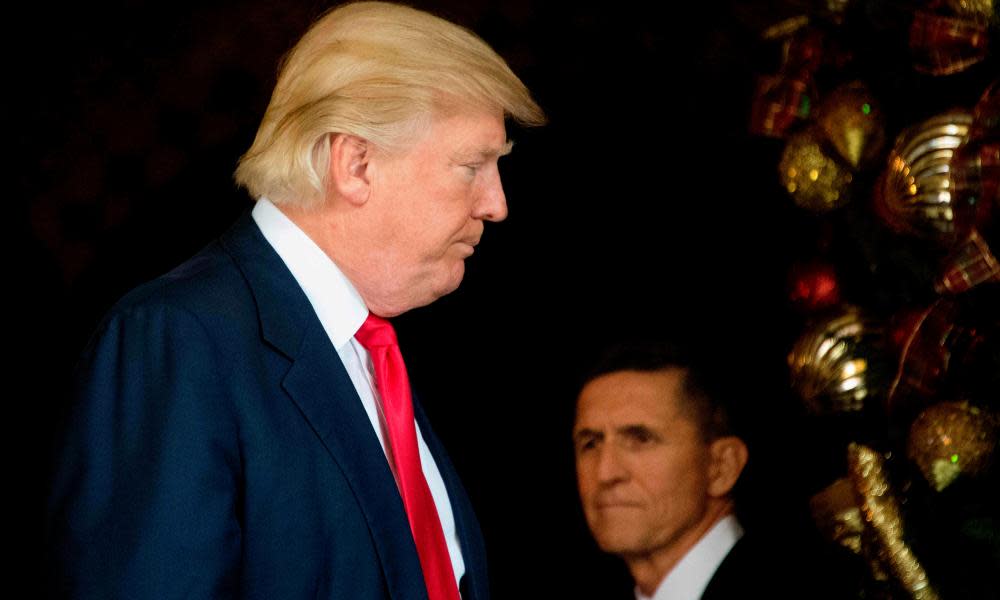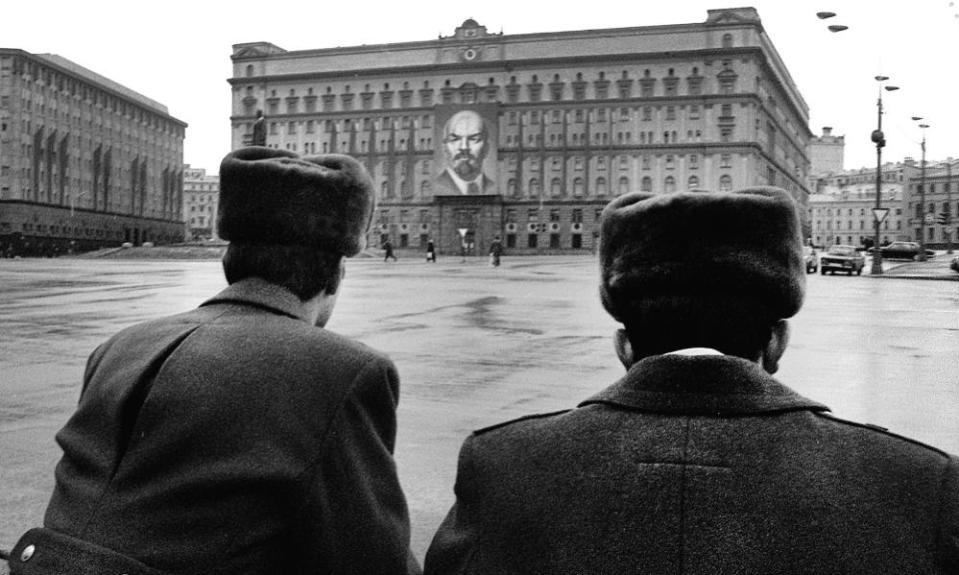Active Measures review: how Trump gave Russia its richest target yet

The president-elect arrived in Washington under a cloud manufactured in Moscow and St Petersburg. Less than a month after Donald Trump took office, the national security adviser Michael Flynn was ousted for lying to the vice-president about a conversation with Russia’s ambassador. All that, however, was a prelude to the firing of the FBI director James Comey and years of resulting turmoil. The Kremlin had succeeded beyond its wildest dreams.
Related: In Deep review: Trump v intelligence – and Obama v the people
Under the subtitle The Secret History of Disinformation and Political Warfare, Thomas Rid helps remind us how we reached this morass, one with antecedents reaching back to Czarist Russia and the Bolshevik revolution. To be sure, the US can use all the help it can get as it navigates the current election cycle and the lies, rumours and uncertainty that shroud the origins of the coronavirus pandemic.
Rid was born in West Germany amid the cold war. The Berlin Wall fell when he was a teenager. He is now a professor at Johns Hopkins.
So what are “active measures”? Previously, Rid testified they were “semi-covert or covert intelligence operations to shape an adversary’s political decisions”.
“Almost always,” he explained, “active measures conceal or falsify the source.”
The special counsel’s report framed them more narrowly as “operations conducted by Russian security services aimed at influencing the course of international affairs”. Add in technology and hacking, and an image of modern asymmetric warfare emerges.
Rid travels back to the early years of communist Russia, recounting the efforts of the government to discredit the remnants of the ancien régime and squash attempts to restore the monarchy. The Cheka, the secret police, hatched a plot that involved forged correspondence, a fictitious organization, a fake counter-revolutionary council and a government-approved travelogue.
Words and narratives morphed into readily transportable munitions. The émigré community was declawed and the multi-pronged combination deemed “wildly successful”. The project also “served as an inspiration for future active measures”. A template had been set.
Fast forward to the cold war and the aftermath of the US supreme court’s landmark school desegregation case. The tension between reality and the text and aspirations of the Declaration of Independence was in the open again. Lunch-counter sit-ins and demands for the vote filled newspapers and TV screens. The fault lines were plainly visible – and the Soviet Union pounced.
In 1960, the KGB embarked on a “series of race-baiting disinformation operations” that included mailing Ku Klux Klan leaflets to African and Asian delegations to the United Nations on the eve of a debate on colonialism. At the same time, Russian “operators posed as an African American organization agitating against the KKK”.
More than a half-century later, Russia ran an updated version of the play. Twitter came to host the fake accounts of both “John Davis”, ostensibly a gun-toting Texas Christian and family man, and @BlacktoLive”, along with hundreds of others.
The Internet Research Agency (IRA), a Russian troll factory, organized pro-Confederate flag rallies. As detailed by Robert Mueller, the IRA also claimed that the civil war was not “about slavery” and instead was “all about money”, a false trope that continues to gain resonance among Trump supporters and proponents of the “liberate the states” movement. According to Brian Westrate, treasurer of the Wisconsin Republican party, “the Confederacy was more about states’ rights than slavery.”
Depicting West Germany as Hitler’s heir was another aim. At the time, “some aging former Nazis still held positions of influence”, Rid writes. In the late 1960s, “encouraging ‘anti-German tendencies in the West’ was very much a priority”.
In 1964, with Russian assistance, Czech intelligence mounted Operation Neptun, sinking Nazi wartime documents to the bottom of the ominous sounding Black Lake, near the German border. The cache was then “discovered” – media pandemonium ensued. Four years later the mastermind of the scheme, Ladislav Bittman, defected to the US.
Prior to 2016, Russia’s most notable active measure using the US as a foil was the lie that Aids was “made in the USA”. In retaliation for US reports of Soviet use of chemical weapons in Afghanistan, the KGB unfurled Operation Denver, a multi-platformed campaign that falsely claimed “Aids was an American biological weapon developed at Fort Detrick, Maryland”. Central to the effort was the earlier publication of an anonymous letter with a New York byline by an Indian newspaper. The forged missive claimed “Aids may invade India: mystery disease caused by US lab experiments.”

Rid writes that the letter was “a masterfully executed disinformation operation”, an amalgam of “20% forgery and 80% fact”. The reality was that the Pentagon and the CIA had tested “new types of biological weapons in densely populated areas of the US and Canada”, and conducted research on disease and psychotropic drugs on an array of human guinea pigs.
Related: Front Row at the Trump Show review: Jonathan Karl's pre-pandemic warning
The KGB doubled down and published a reworked version of the story in an English-language Soviet publication. At the same time and without any apparent nexus to the Soviet campaign, the Amsterdam News, a paper with a readership base in New York’s African American community, opined that Aids was a likely result of US bacteria warfare. Once again, social mistrust helped weaponize a concocted narrative.
To be clear, Russian “active measures” did not tip the 2016 election to the Republicans. On that score, the FBI and Comey had a greater impact. Instead, the Russians caused the US to stare into a mirror, red and blue Americans each seeing what they expected.
Nor is an end in sight. According to the Senate intelligence committee, “Russian disinformation efforts may be focused on gathering information and data points in support of an active measures campaign targeted at the 2020 US presidential election”, with an emphasis upon “gathering personal information” from “US-based audiences sympathetic to Russian disinformation topics”.
America remains mired in a cold civil war. Active Measures is another book for such troubled times.

